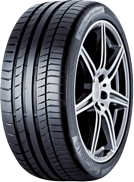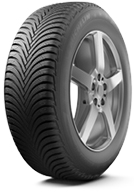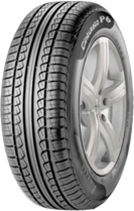Tyre Search
Tyre Patterns
Tyres are designed with different tread patterns which have been specially constructed to suit specific driver requirements. The arrangement of channels, grooves, sipes and blocks can be so different that there are thousands of different tyre patterns to choose from.
Different tyre patterns provide different driving advantages, for example some may be optimised for high speed agility and cornering whereas others are designed to deliver superior safety in wet conditions. Whilst all tyre patterns are slightly different, they can be separated by three main categories.
It is important that you do not mix tyre patterns on a single axle as each pattern is optimised for specific driving capabilities.
Asymmetric Tyres

Asymmetric tyres are constructed with two alternate tread patterns on the tyre. The outer edge of the tyre will usually contain large stiff tread blocks which help with cornering whilst the inside contains smaller tread blocks that provide resistance against aquaplaning and enable grip. Asymmetric tyres usually provide high levels of performance thanks to their superior gripping abilities.
It is important that asymmetric tyres are fitted the right way as the larger tread block must be situated on the outside. If these tyres are not fitted correctly, the driver will not benefit from the optimised tread. To help the tyre fitter, the sidewall of the tyre is usually clearly marked.
Directional Tyres

Directional tyres are constructed to rotate in one specific direction and if they are mounted to the vehicle the wrong way, they will not be able to offer the gripping capabilities intended. The tread pattern on directional tyres usually incorporates ‘v’ shaped blocks, which are optimised to effectively distribute water away from the tyre tread, providing resistance against aquaplaning. These tyres also achieve high levels of directional stability and reduce noise levels.
Tyres with a directional tread pattern tend to provide the best performance in wet conditions and this is why most winter tyres are designed with a directional tread pattern. Directional tyres will usually be marked with an arrow which indicates the way that they are supposed to rotate. Fitting either directional or asymmetric tyres incorrectly will result in an MOT fail.
Symmetrical Tyres

Symmetrical tyres (also referred to as multi-directional tyres) feature a symmetrical pattern, so if you were to place a mirror in the centre of the tyre it would reflect the same image. These tyres can be fitted in any position of the vehicle and they can travel in any direction. This is useful if you needed to rotate the tyres on your vehicle.
Ideal for urban drivers, symmetrical tyres offer enhanced road holding and excellent gripping capabilities. However, they are not optimised for wet conditions and so are not recommended for winter driving or driving in more rural areas.
For further information on tyre patterns simply contact your local Setyres branch where one of our tyre specialists will be happy to offer guidance.













